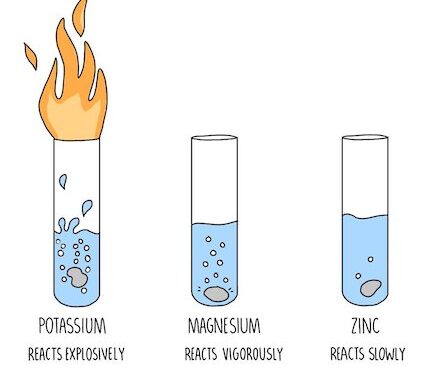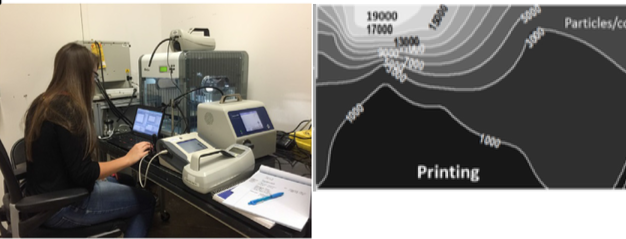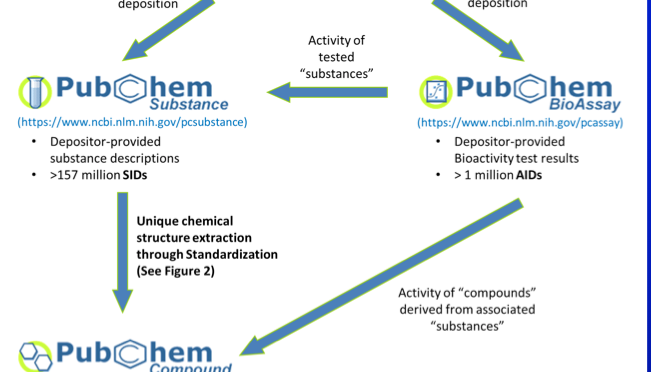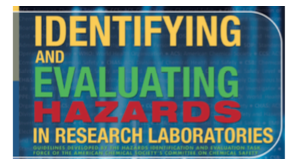There were 12 questions about risk and green chemistry rating systems raised by the audience.
These answers are from both Dr, Denlinger and Mr. Stuart; feel free to share your thoughts and follow up questions in the comments section below. (Note: the comments section is moderated, so there may be some time delay before your question shows up.)
1.) Who decides these risk and consequence coefficients – are they in any way standardized?
Kendra’s response: The individual filling out the JHA decides which numbers should go into the risk rating calculation. I think it would be possible to standardize them in some ways (see question 7), but in the end there will always be some differences from one researcher to another.
Ralph’s additional comment: In an ideal world, we would be able to use statistical analysis of real world incidents to assign these coefficients; however, adverse lab incidents are not well documented, so such data is not readily available in most cases, particularly in the research setting. For this reason, ultimately, these coefficients will represent human judgements.
However, the goal of the process is to prioritize the hazards of the process so that control measures can be appropriately applied to those hazards. Fortunately, this prioritization can usefully proceed without statistical evidence, by enlisting a qualified team of people to perform the JHA based on their experience with similar processes.
2.) The JHA shown missed stating the physical electrical hazards.
Kendra’s response: Good point!
Ralph’s additional comment: This is a good example of how safety reviews can benefit from reviews by other people.
3.) Is there any way to scale the green lab and risk assessment process up so that we are evaluating labs or specific projects or students. Researchers may find the time required to evaluate each reactions prohibitive.
Kendra’s response: Yes, there probably would be many ways to scale up the risk assessment process in order to save time. However, I would caution against doing so. I found it so interesting and helpful because of the individual nature of the JHA and the fact that it takes some time to fill out completely.
In my experience, too many students are thrown into the lab setting with little training to perform their duties safely, and requiring the JHA before performing something new in the lab would help alleviate this problem because the student is forced to sit down and actually think about what they’re going to do. Furthermore, it seems to me that safety should be a focus of the graduate school experience, so the time spent filling out JHA’s could become part of the process of obtaining a PhD rather than something extra.
Ralph’s additional comments: In the environmental health and safety world, this strategy is called “hazard banding” or “control banding“, depending on the specific application. As you suggest, this approach is driven by resource constraints, so it requires omitting process specific information from the hazard management process. So I agree with Kendra that this approach has to be carefully managed in the academic setting.
In that context, I would like to add that my experience is that safety review of chemical processes become quicker over time, particularly in the context of a specific research program. However, as Kendra suggests, in the academic research laboratory, focused on the student experience, JHA’s for individual processes are appropriate, as they avoid the “Chinese whispers” or “telephone” problem associated with the oral transmission of process safety knowledge. As Dwight Eisenhower (among others) said: Plans are worthless, but planning is everything. This means to me that the JHA discussion is the point of the exercise, rather than the completed form.
4.) I would encourage you to incorporate a few basic biological parameters into your safety protocols.
Ralph’s response: If you are referring to managing biological hazards used as part of the research process, these are well addressed by Biosafety in Microbiological and Biomedical Laboratories, 5th Edition.
5.) How much time does it take for hazard assessment in an organic chem research lab, and What time line do you recommend?
Kendra’s response: It took me about an hour to fill out my JHA, though it was for an experiment that I’ve performed many times. It would probably take a bit longer for something new, AND it would be important to discuss the experiment with anyone in the lab who has performed it before or used the same chemicals and experimental set-up.
6.) Can this tool be used to define low risk labs and help keep them that way for ventilation savings?
Kendra’s response: That’s a really interesting question! It seems like it could definitely be adapted for that purpose, though there would need to be some guidelines in place to make sure nothing changes (like ordering a new chemical that is more hazardous than those used in the past).
Ralph’s response: This is an approach that is of great interest to many people. While at Cornell University, I helped to write an Laboratory Ventilation Management Plan that uses this strategy. In addition, I have published several articles in the Journal of Chemical Health and Safety that describes this approach in the LVMP.
7.) How do you quantify your hazard rating and quantify the probability of occurrence during the hazard analysis? Would each individual have the same risk level or will that vary significantly researcher to researcher?
Kendra’s response: I assigned risk ratings using my experience in the lab. Newer students would probably need to get help from more senior students or research advisers. It’s also possible their risk ratings would be different because they’re newer to conducting research—they might be more likely to spill a chemical, for example. In this way, JHA’s might vary for one researcher as he or she gains more experience working in the lab.
The risk ratings would probably vary quite a bit from researcher to researcher, though the JHA is meant to be completed and used on more of an individual basis than some of the other hazard assessment tools. It seems like it would be possible to add in some guidelines to aid in conformity, like using SDS terms to correspond to severity of consequences (harmful, toxic, fatal).
Ralph’s comments: My experience has been that variations between researchers occurs when they are making different assumptions about a process. For example, some people might have easy access to a fume hood to perform their chemical work in, while others may not. This difference can greatly impact the risk ratings and the consequent JHA. Identifying these differences are a key advantage of reviewing the JHA with other chemists.
8.) Has the safety of nano materials been addressed in this type of safety concerns?
Ralph’s comment: Yes, NIOSH, among others, has been conducting significant research into the hazards of nanomaterials. See their Nanotechnology web page for more information on this.
9.) Has an Life Cycle Assessment been conducted on the overall environmental and safety impacts of solvent use vs the alternative reaction methodologies?
Kendra’s response: I’m not aware of any studies like this.
Ralph’s comment: I suspect that the ACS Green Chemistry institute web site would good place to look for such a LCA.
10.) Green solvent: I think there is exaggeration in using the word green in chemistry, especially solvents used for chromatography. Except for water, I don’t think there is any reagent that one can call “green”. Any thoughts? Thanks a lot
Kendra’s response: We can really only talk about green chemistry when comparing more than one thing—solvent, reagent, process, etc. There are some cases where using water might be worse than using something else due to the disposal and treatment process. We can’t just look at something and decide that it’s green; we have to have something with which to compare. Toluene isn’t something you might label as being green, but most chemists would agree that it’s greener than using benzene. Even making that small change is better than doing nothing.
11.) Does the ecoscale assign a penalty for fairly benign solvents like water?
Kendra’s response: No penalty is assigned for the use of water. As far as other solvents go, you can try it yourself using their online calculator! Find it here.
12.) A risk rating of 80 is clearly bad, but does the Hazard Assessment Tool help one evaluate a process involving five RR=10 tasks vs an alternative process involving twenty RR=5 tasks?
Kendra’s response: In and of itself, the JHA does not necessarily help compare a process with an alternative one. Green chemistry metrics can be helpful for comparing two different processes, though there will probably be certain aspects of one that are better and certain aspects of the other that are better.
In some cases, the user’s chemical intuition is the best tool to help decide which route to take after these comparisons have been done. I would probably want to avoid using a particularly hazardous chemical (where severity of consequences would be life-threatening, for example), even if it meant doing 2 or 3 extra steps that were lower risk. In the end, though, it’s going to come down to the individual chemist; the JHA is used to make sure that person knows the risks exist, but it’s up to the individual chemist to decide what to do with that information.
Ralph’s comment: As I suggested above, the research laboratory’s available equipment and resources will impact the best strategy for managing chemical hazards, so the ACS tool does not try to address all situations. Rather, it outlines best practices for addressing the issues raised by the Chemical Safety Board’s report on academic laboratory safety.






